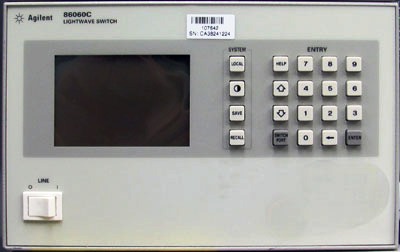
|
|
The Agilent 86060C Compact Lightwave Switch is temperature stabilized and thus, offer excellent repeatability and insertion loss stability. It is designed for long reliable service with low insertion loss and low back reflections, for accurate lightwave measurements in automated test setups where the switch is an integral part of the measurement. The Agilent 86060C is a compact switch available with four to eight output channels and one or two inputs. The switch is designed for easy configuration with HP optical attenuators, lightwave multimeters, OTDRs, and other lightwave test instrumentation for either benchtop or automated system applications. It is designed for 9/125 µm single-mode, as well as 62.5/125 and 50/125 µm multi-mode operation. Switching is bi-directional. The 1xN switching module is built around a precision stepper motor. Specifications. Insertion Loss: Single-mode Switches, 1.0 dB; Multi-mode Switches, 0.8 dB. Repeatability: Sequential Switching, ±0.008 dB; Random Switching, ±0.025 dB. Isolation: -80 dB. Number of Input Channels: Option 001 Single input channel, Option 002 Two input channels. Wavelength and Fiber Type: Option109 1280 -1650 nm, 9/125 µm single-mode fiber; Option 163 830 -1350 nm, 62.5/125 µm multimode fiber; Option H51 830 -1350 nm, 50/125 µm multimode fiber (special order). Port Type: Option 050 Connectors on front panel (with Option 204 only); Option 051 Connectors on rear panel (for connectorized outputs only); Option 052 3 meter fiber out the rear panel (for connectorized outputs, connector is at the end of the 3 meter fiber). Output Channels: 4, 6, 8.
|